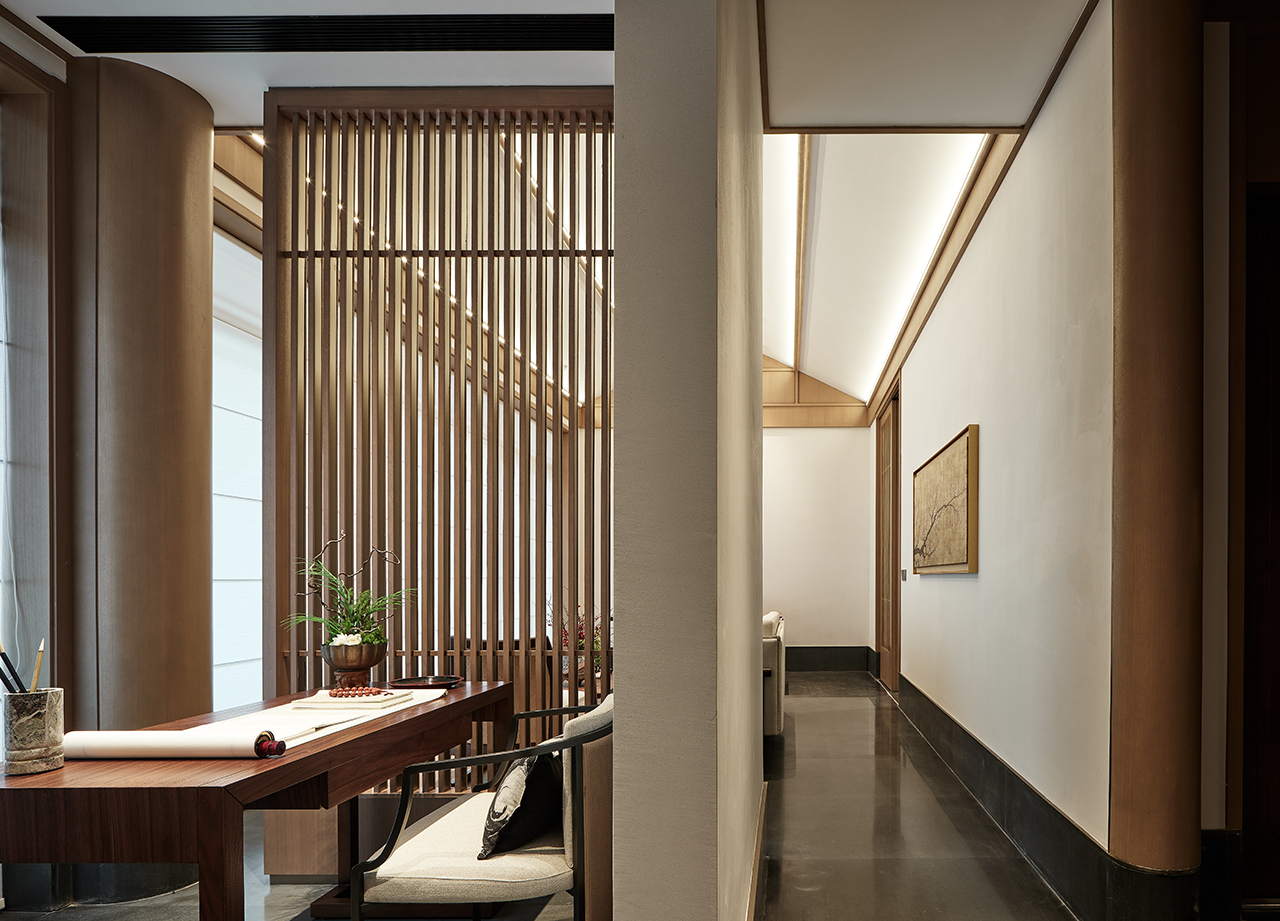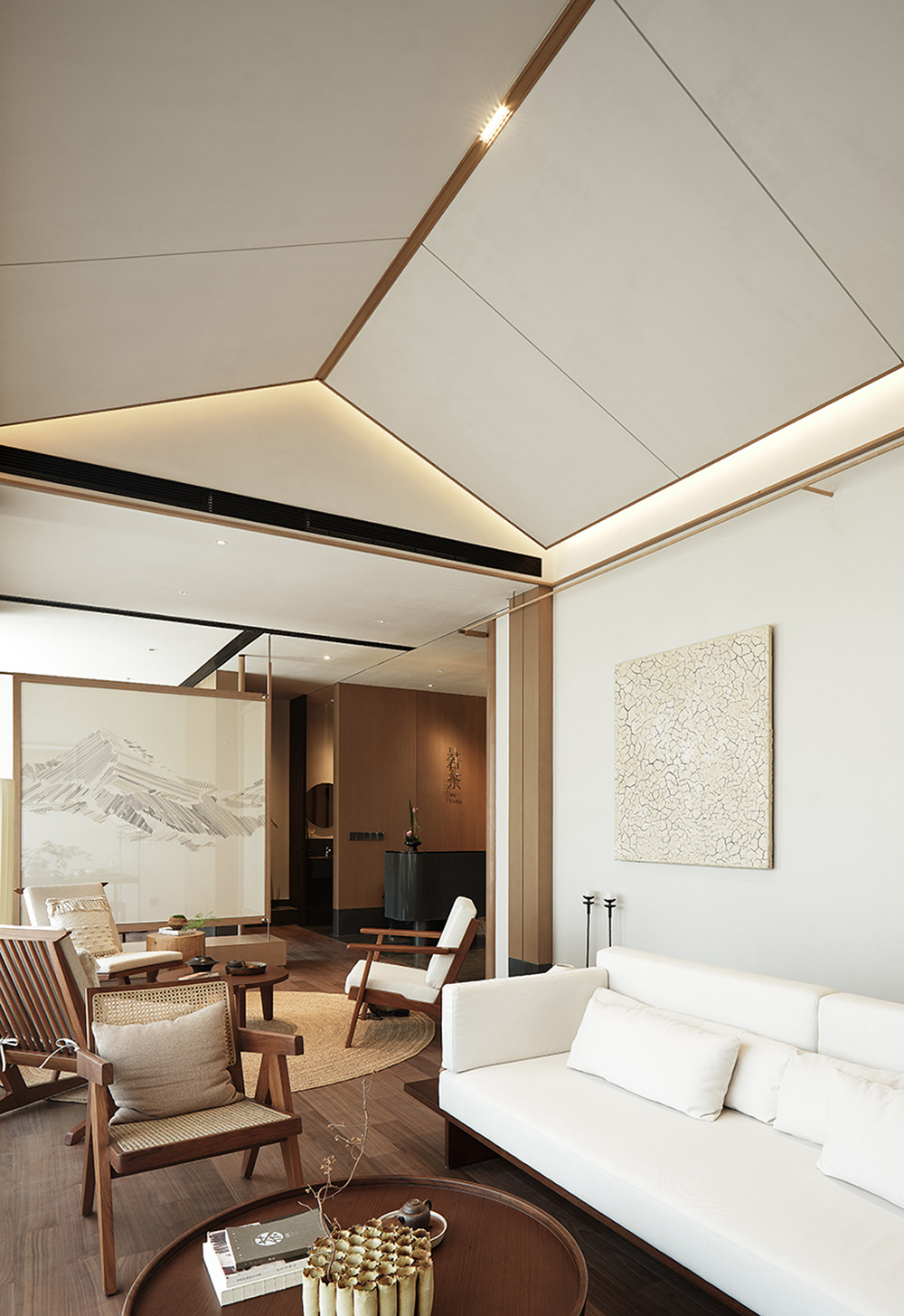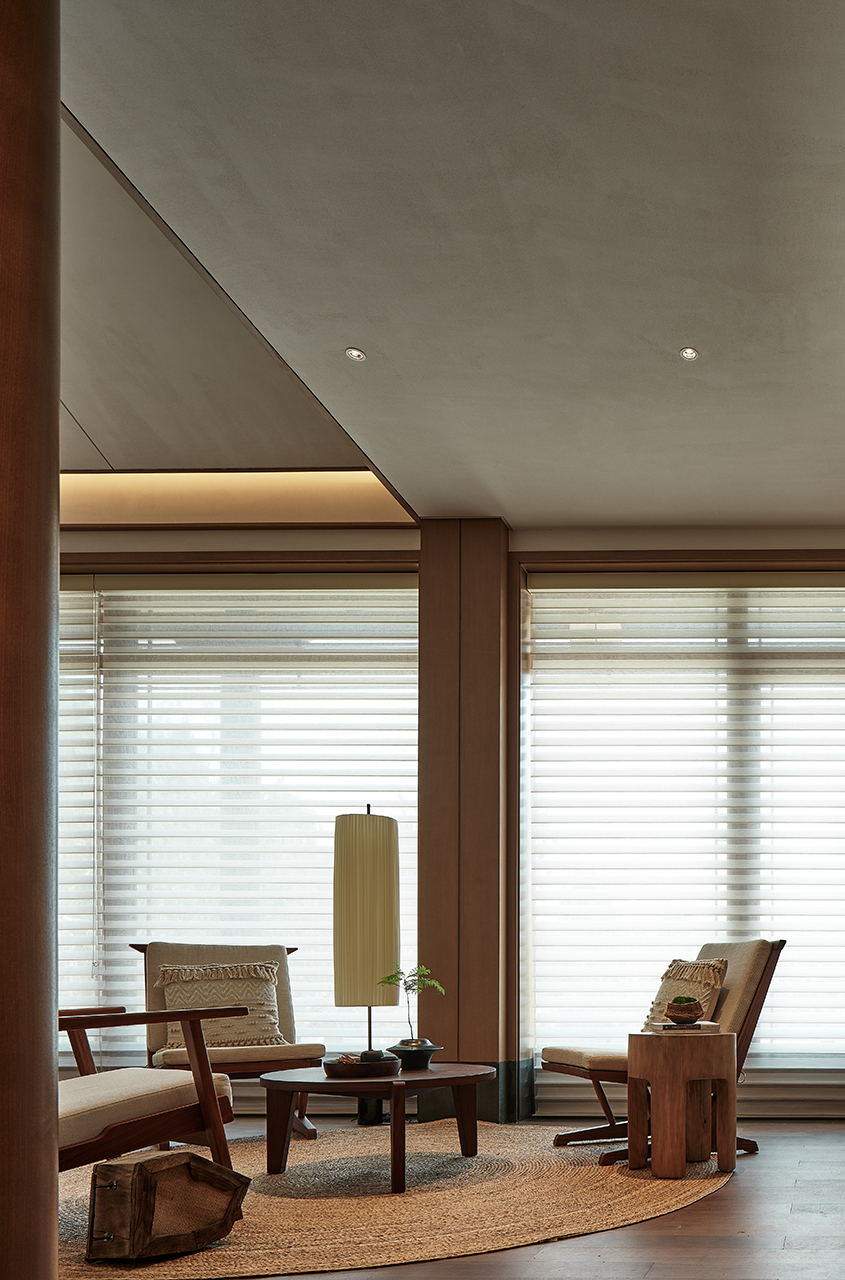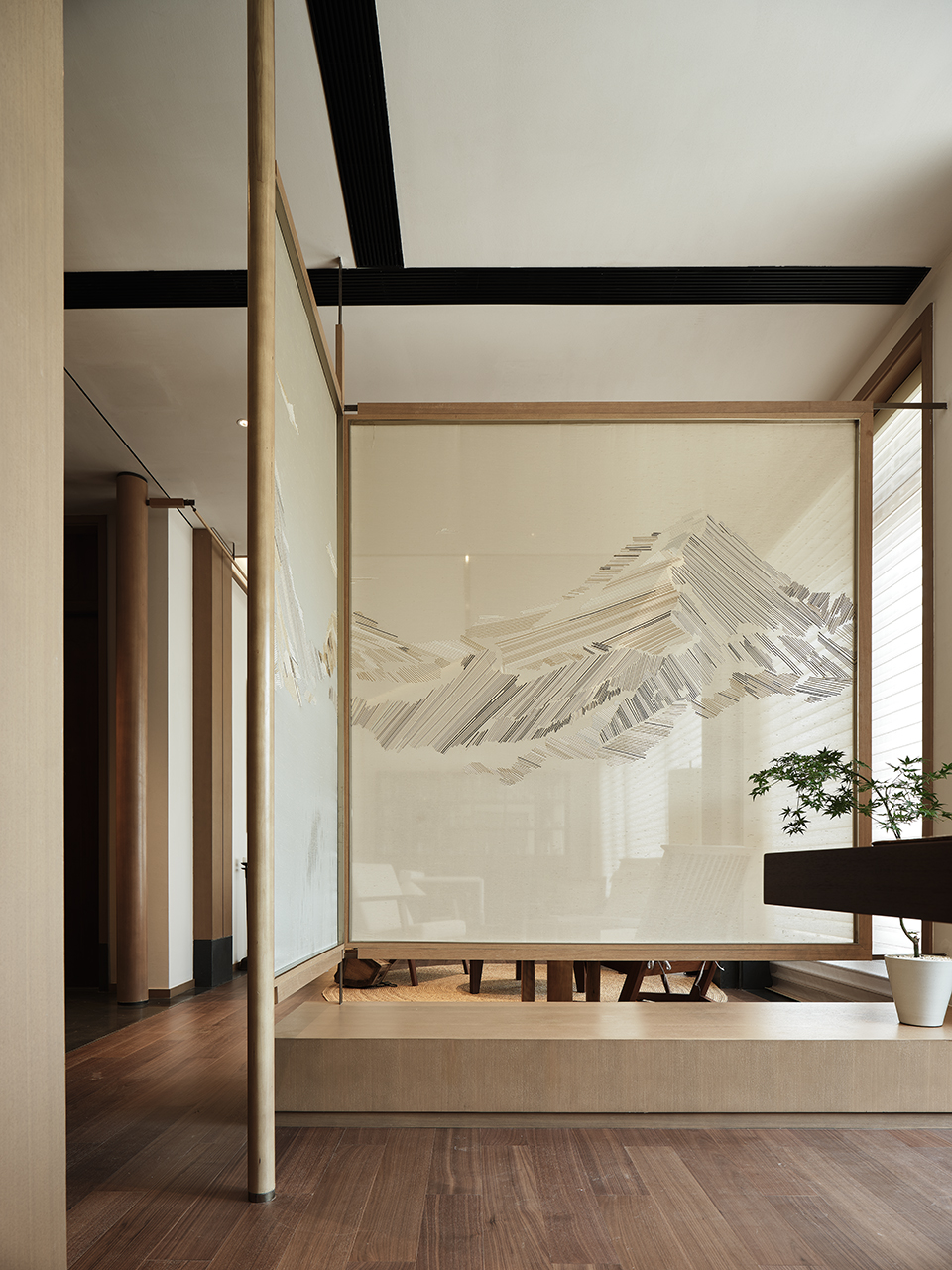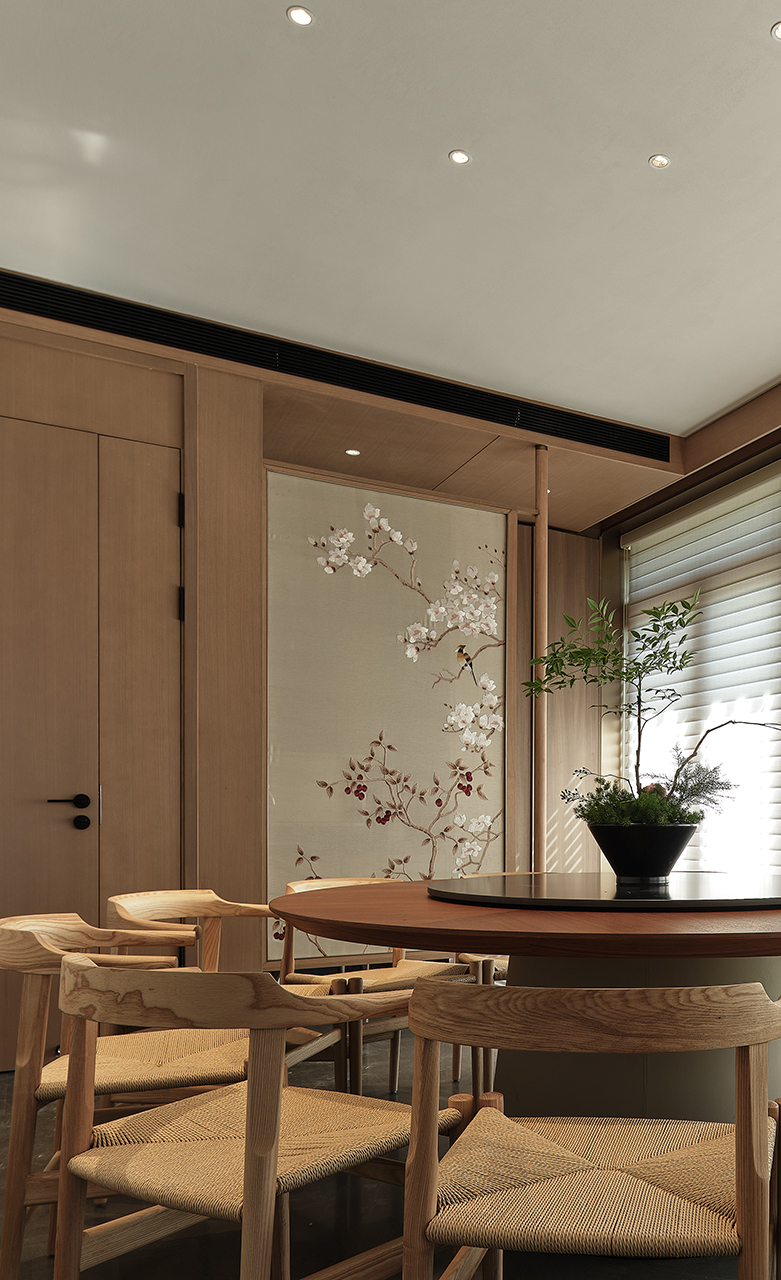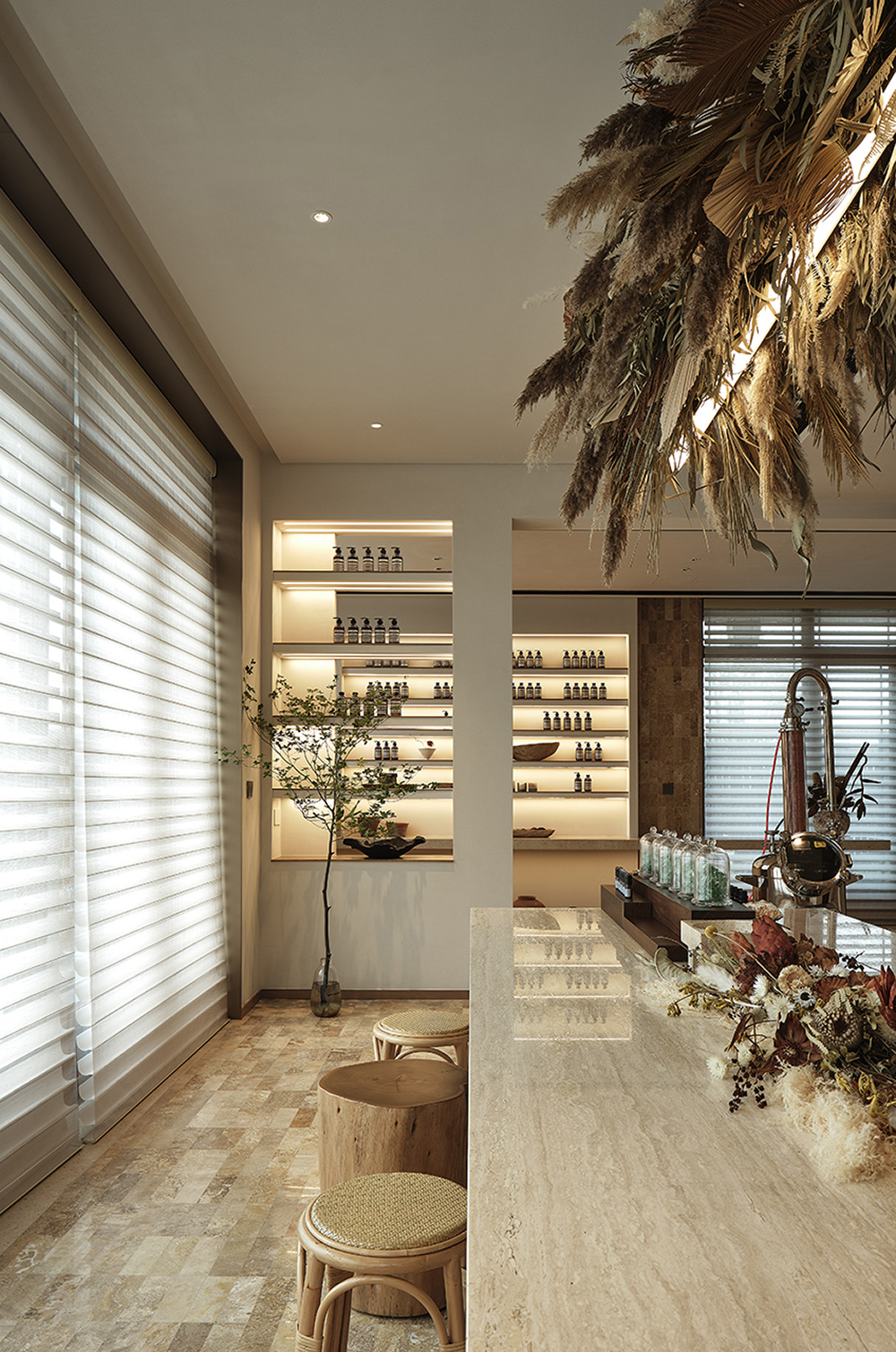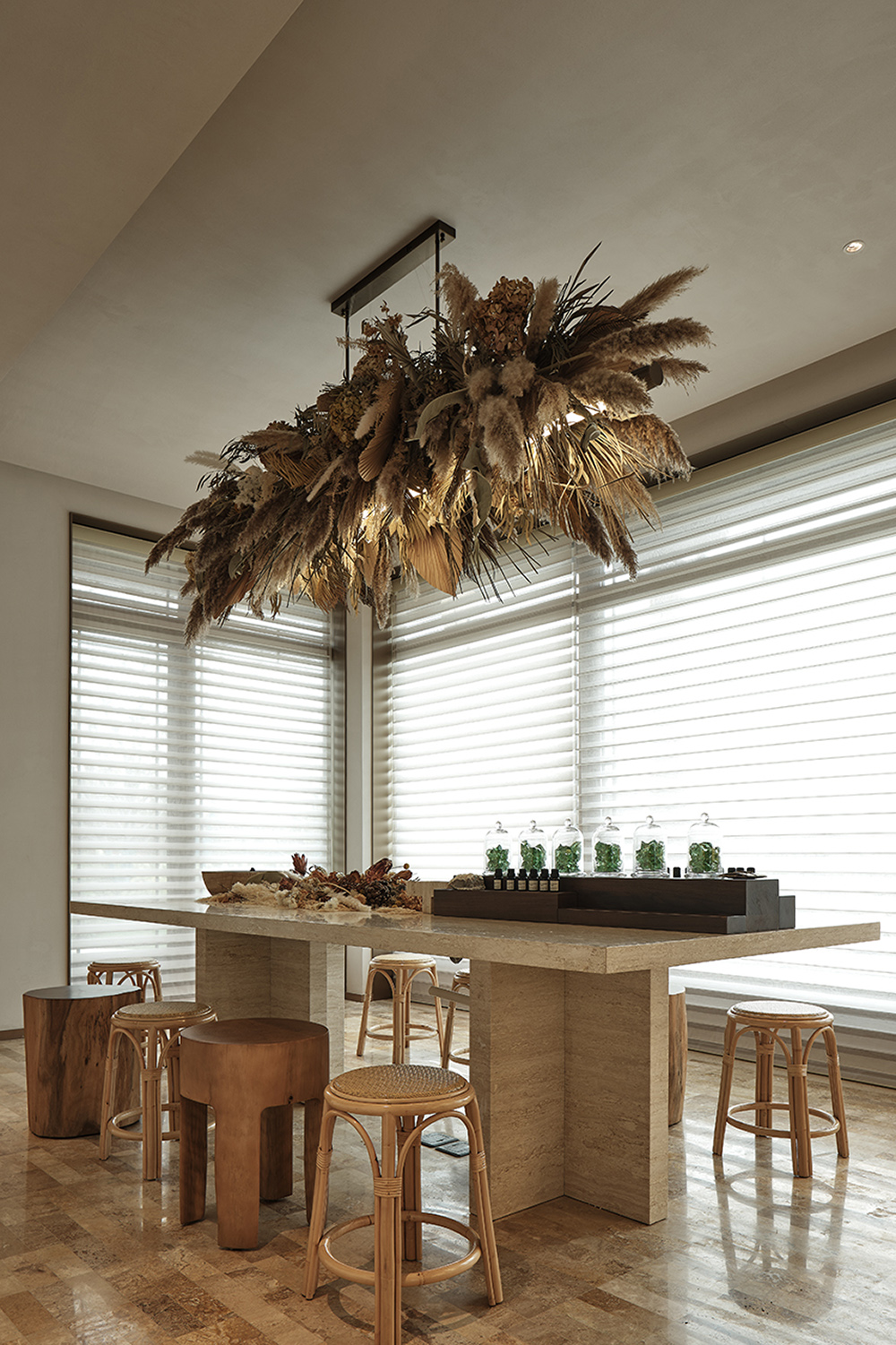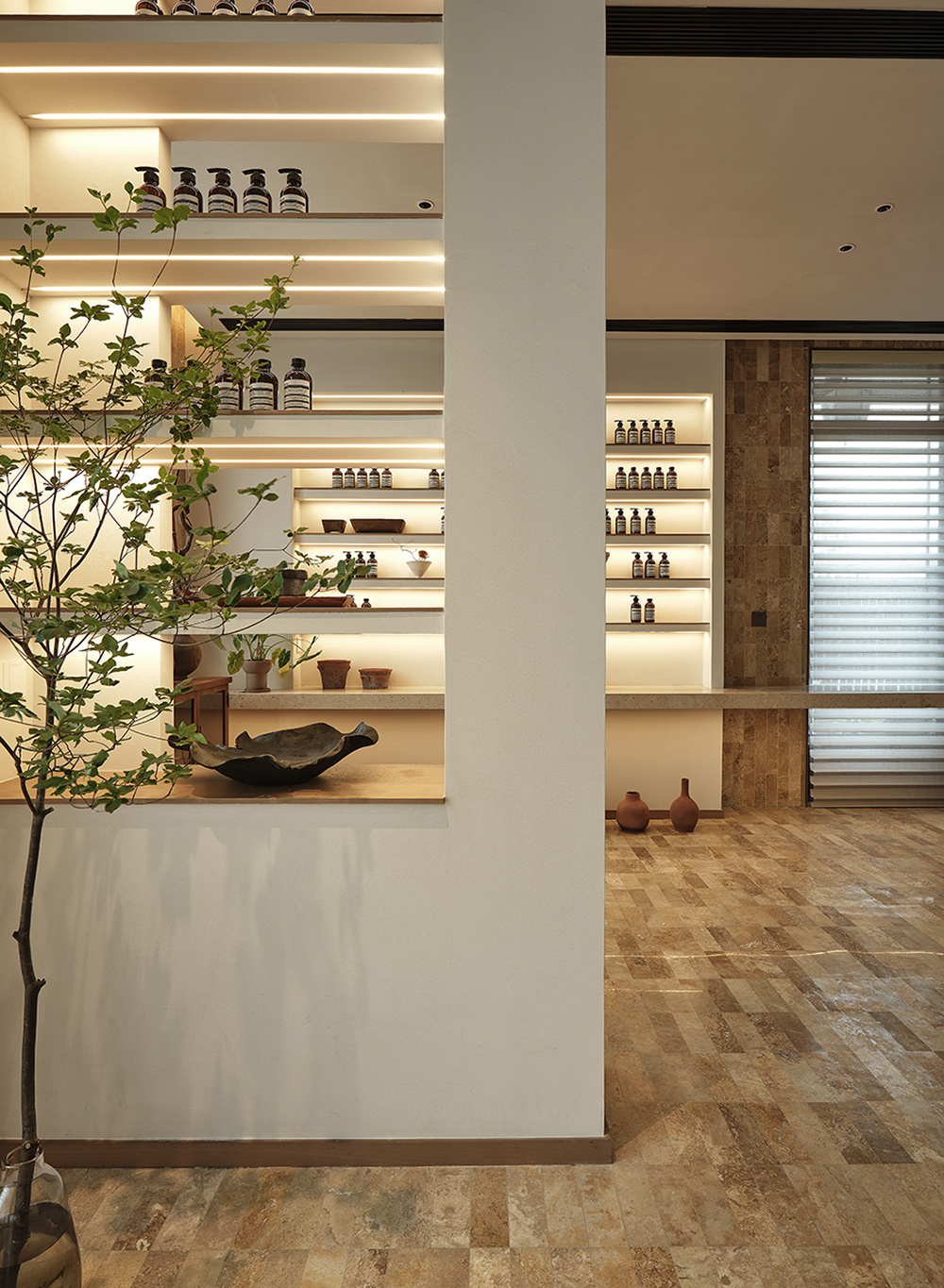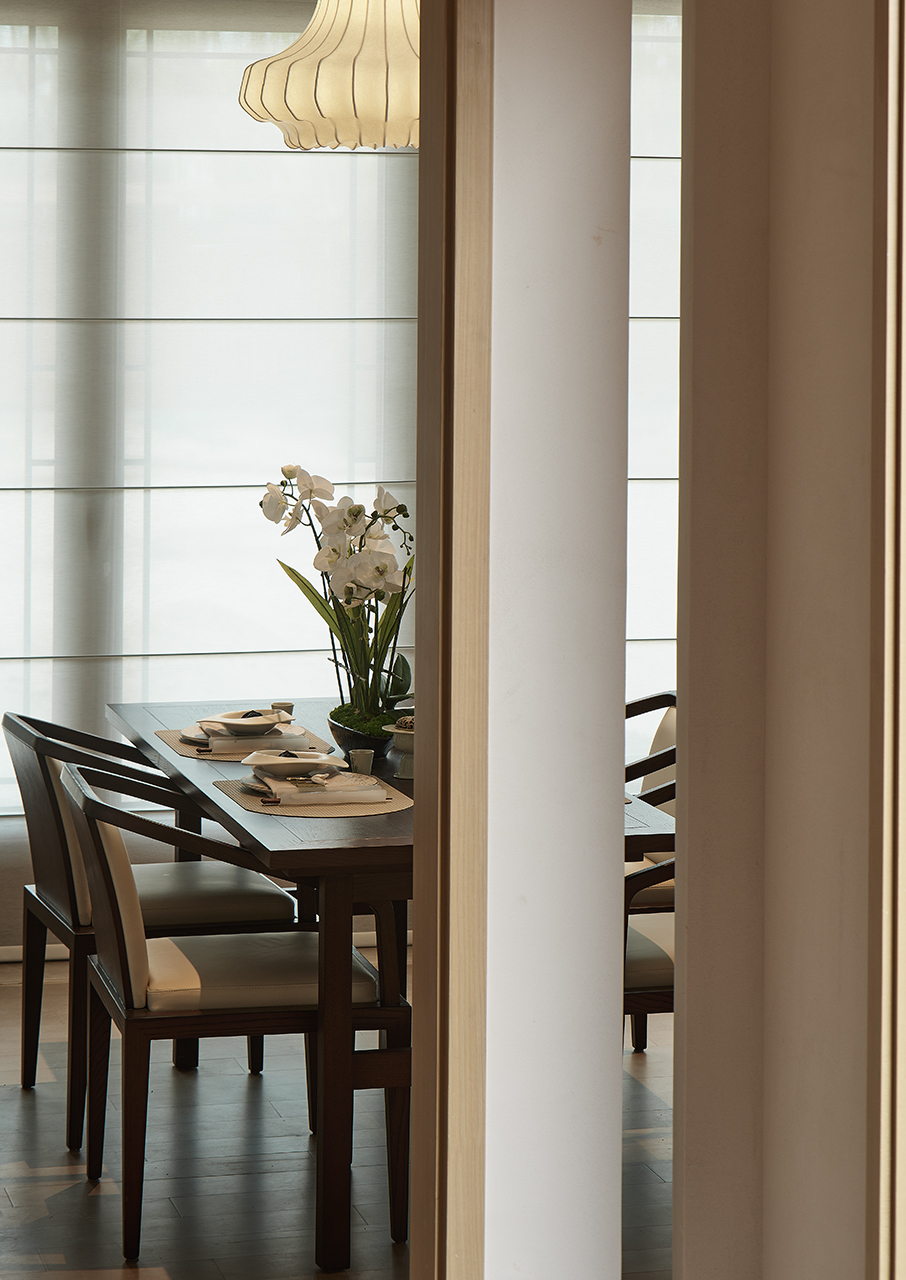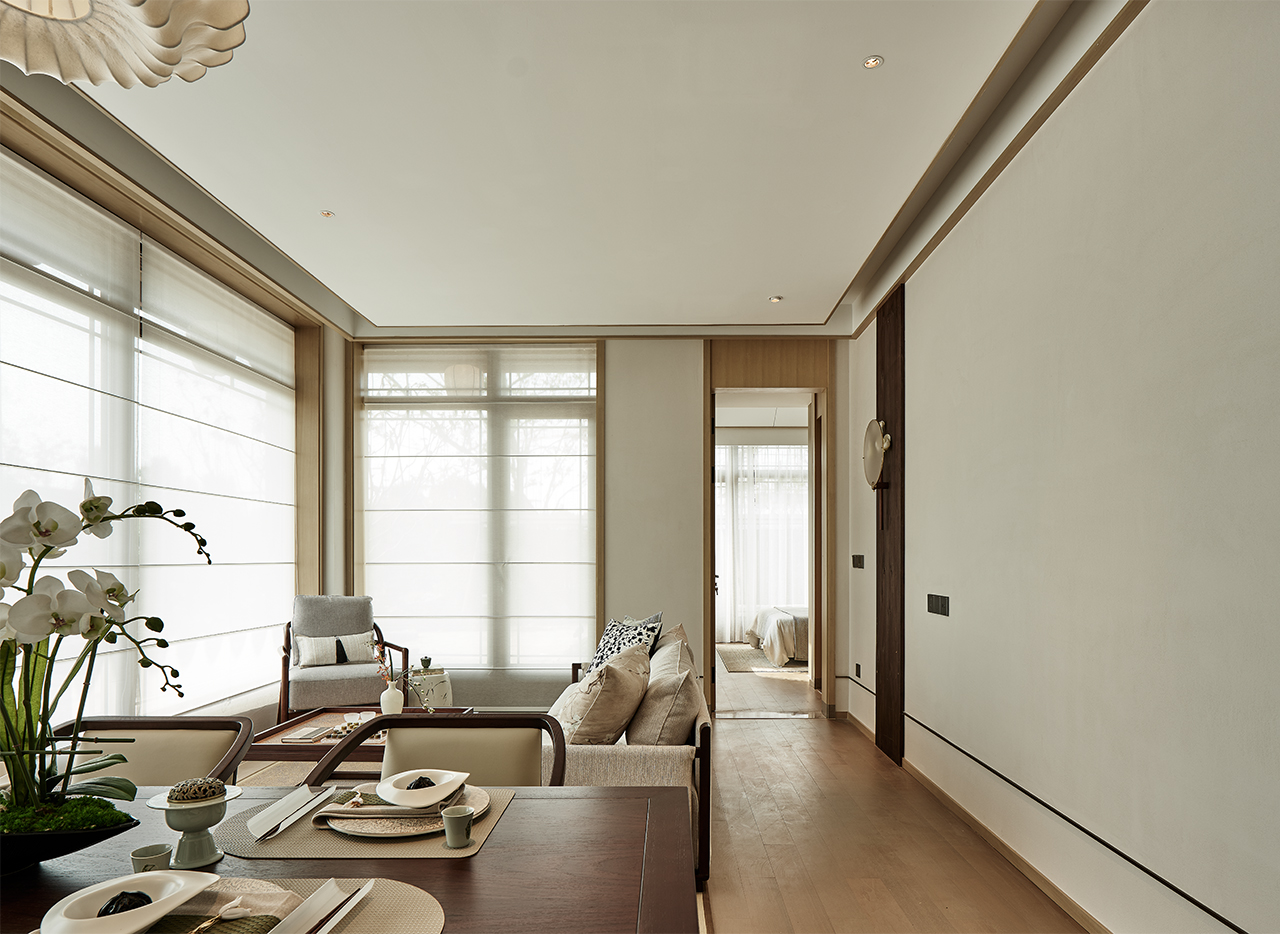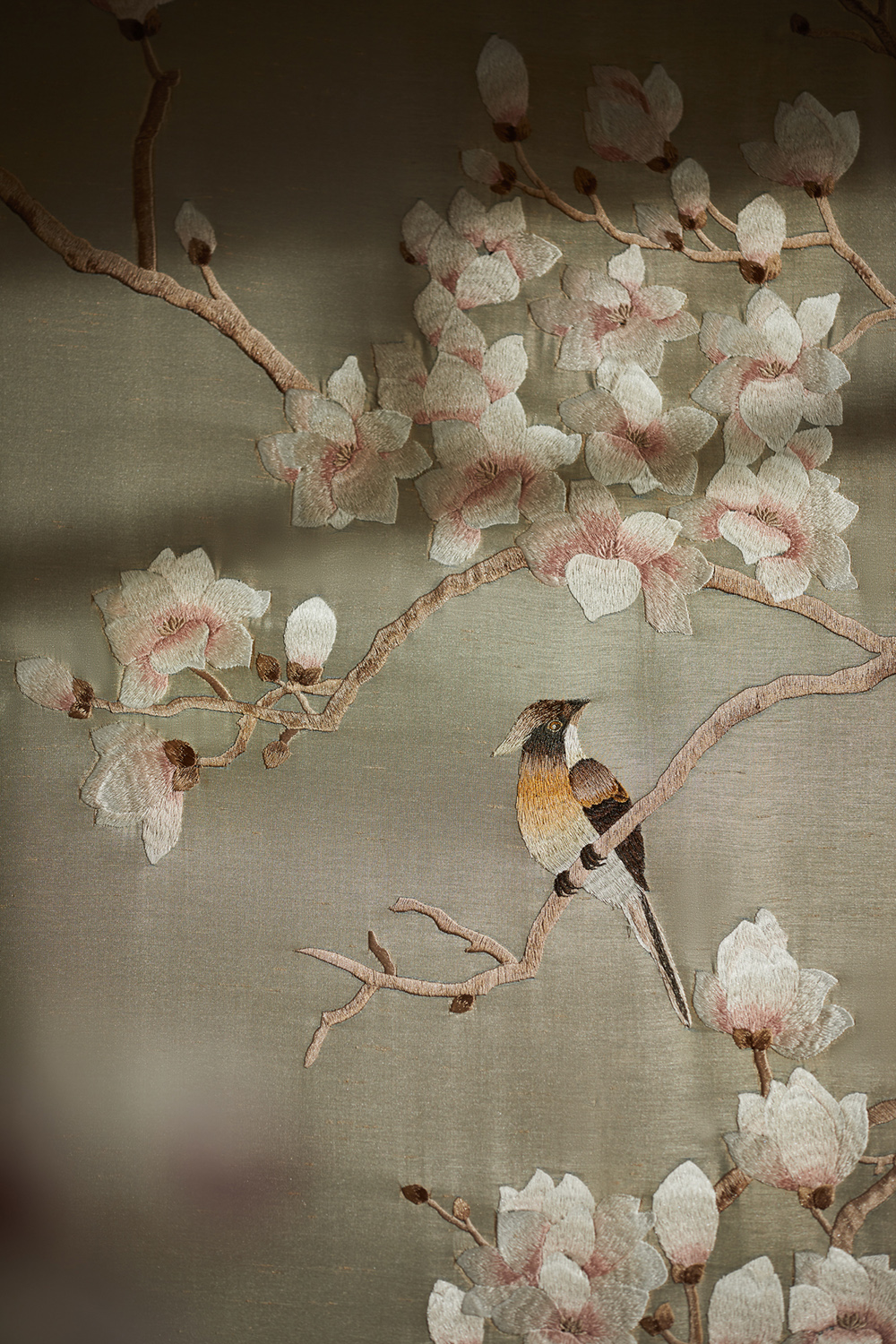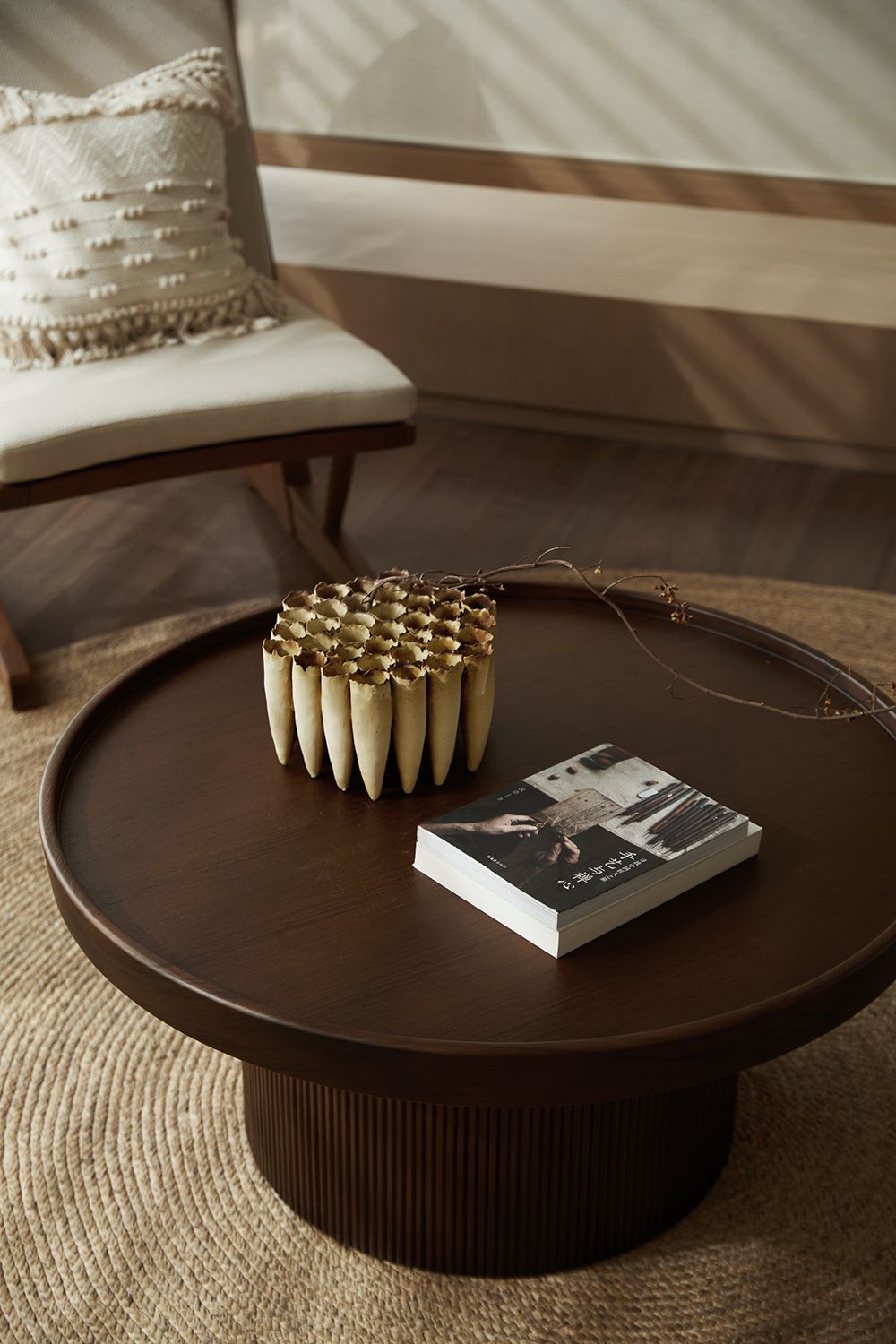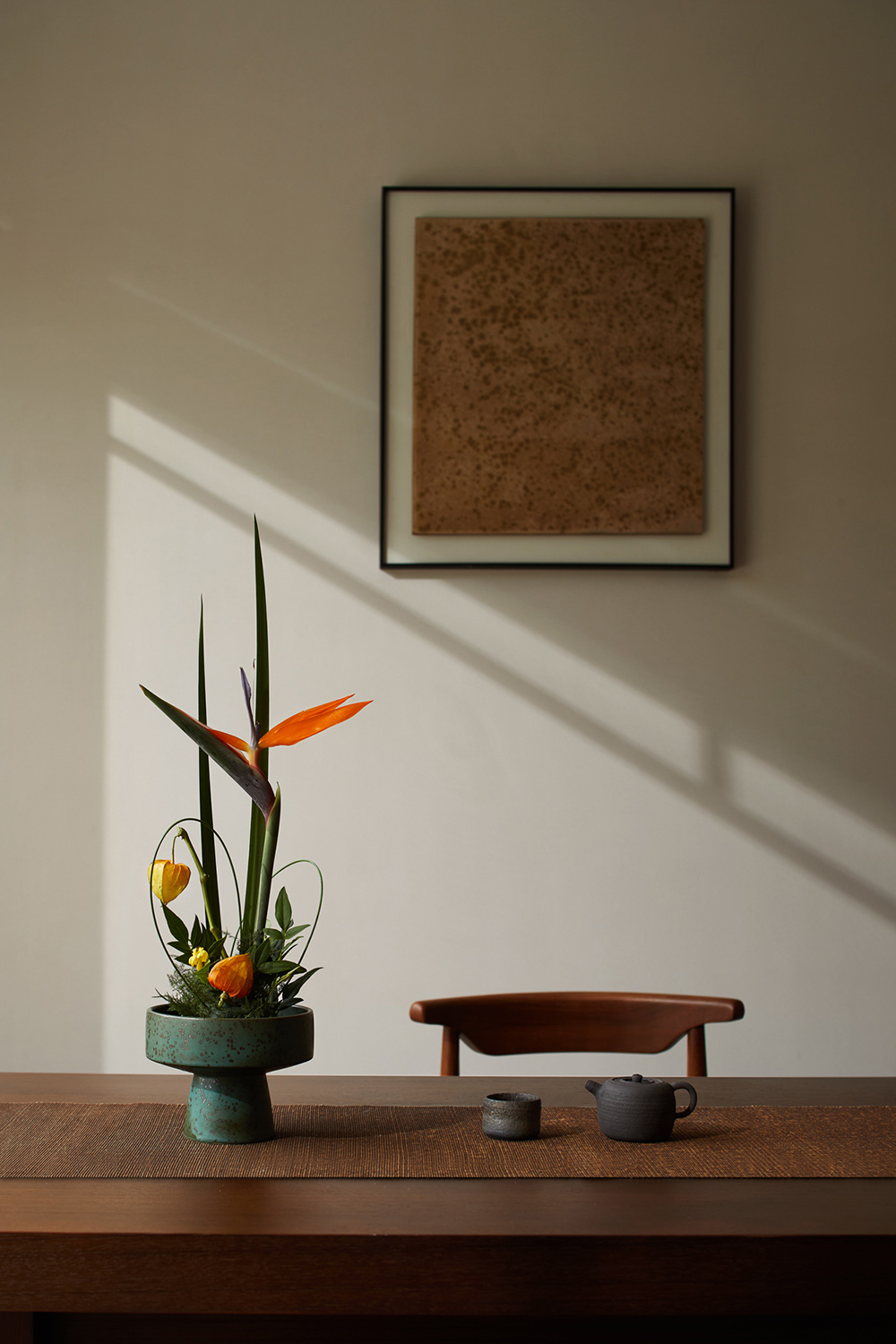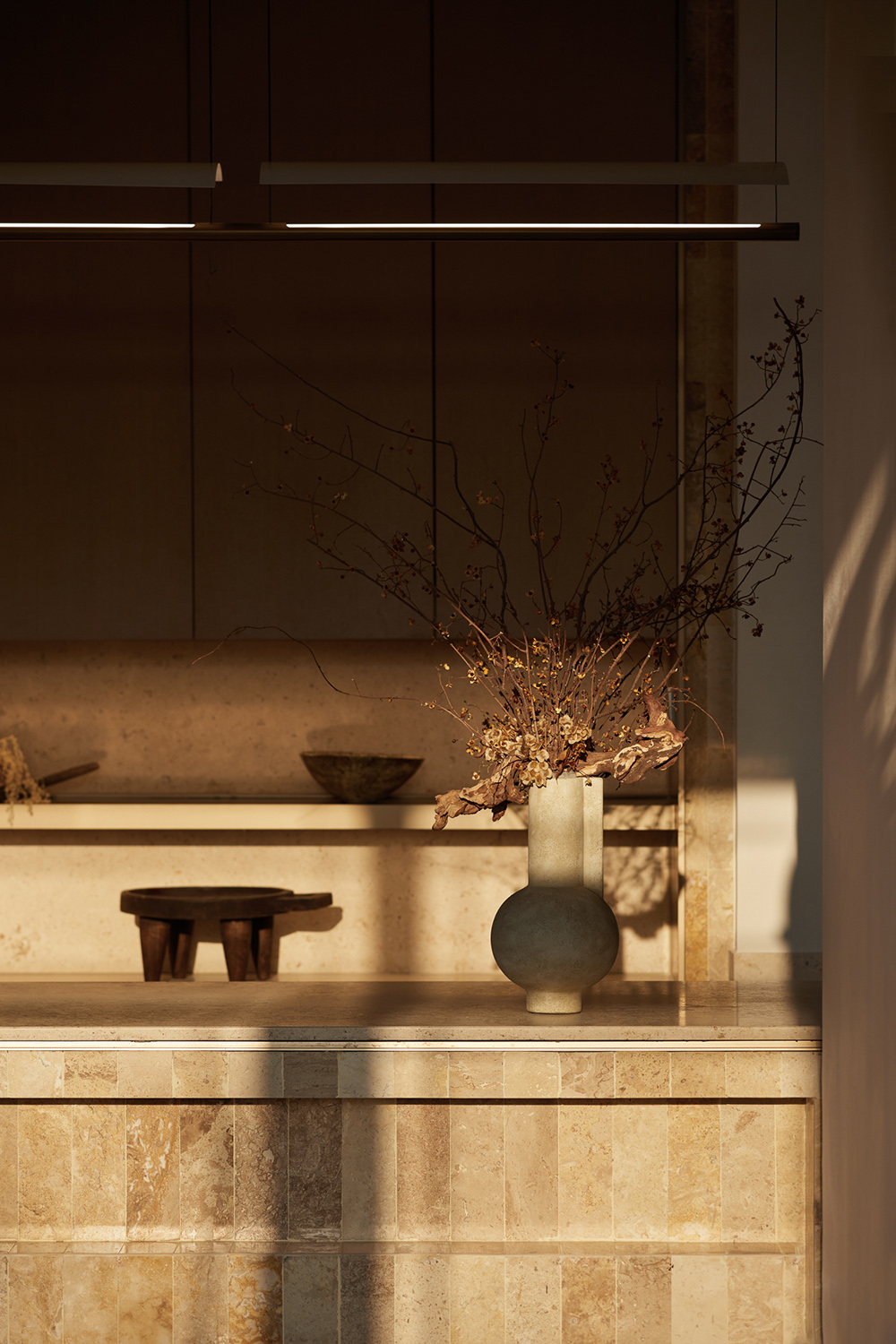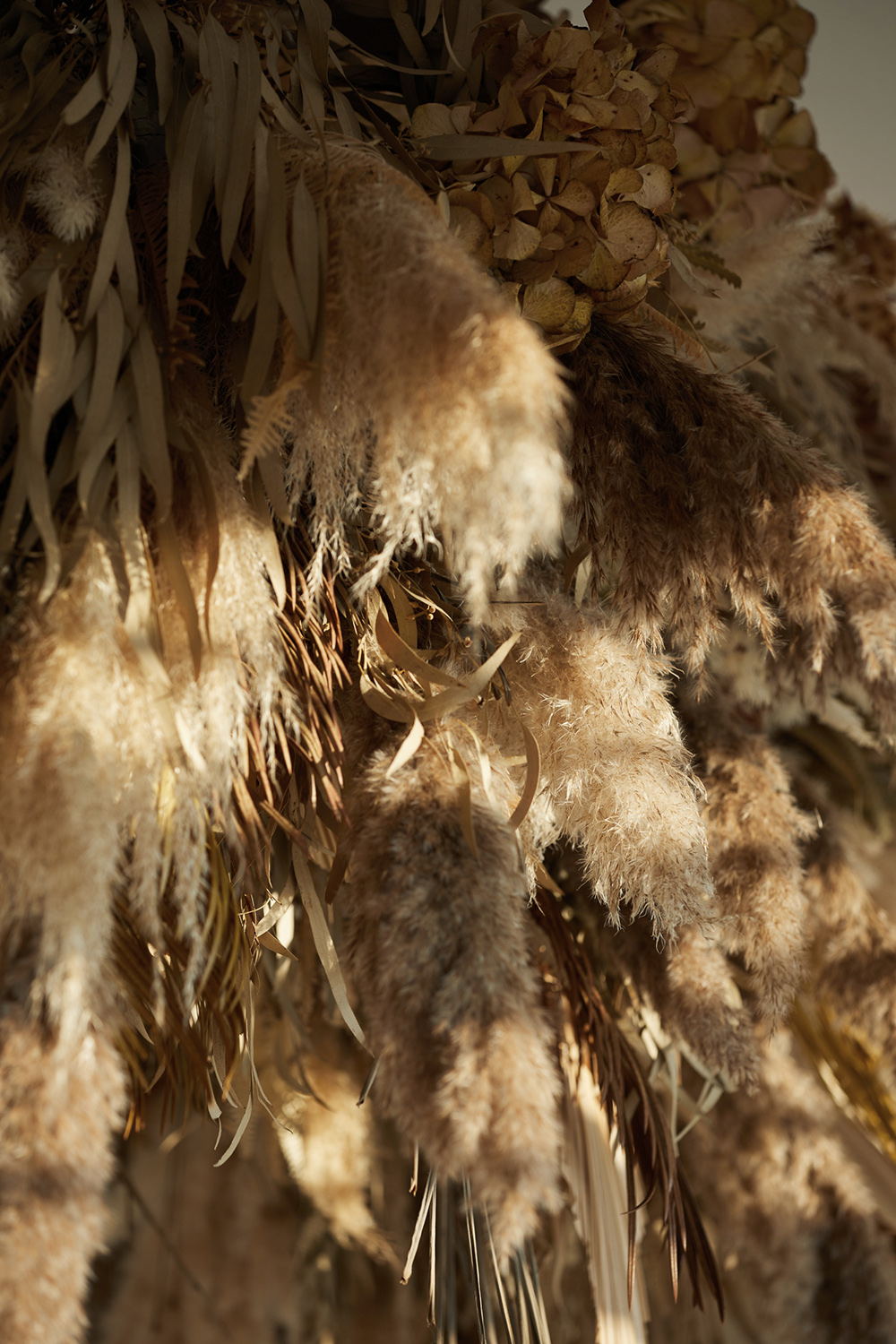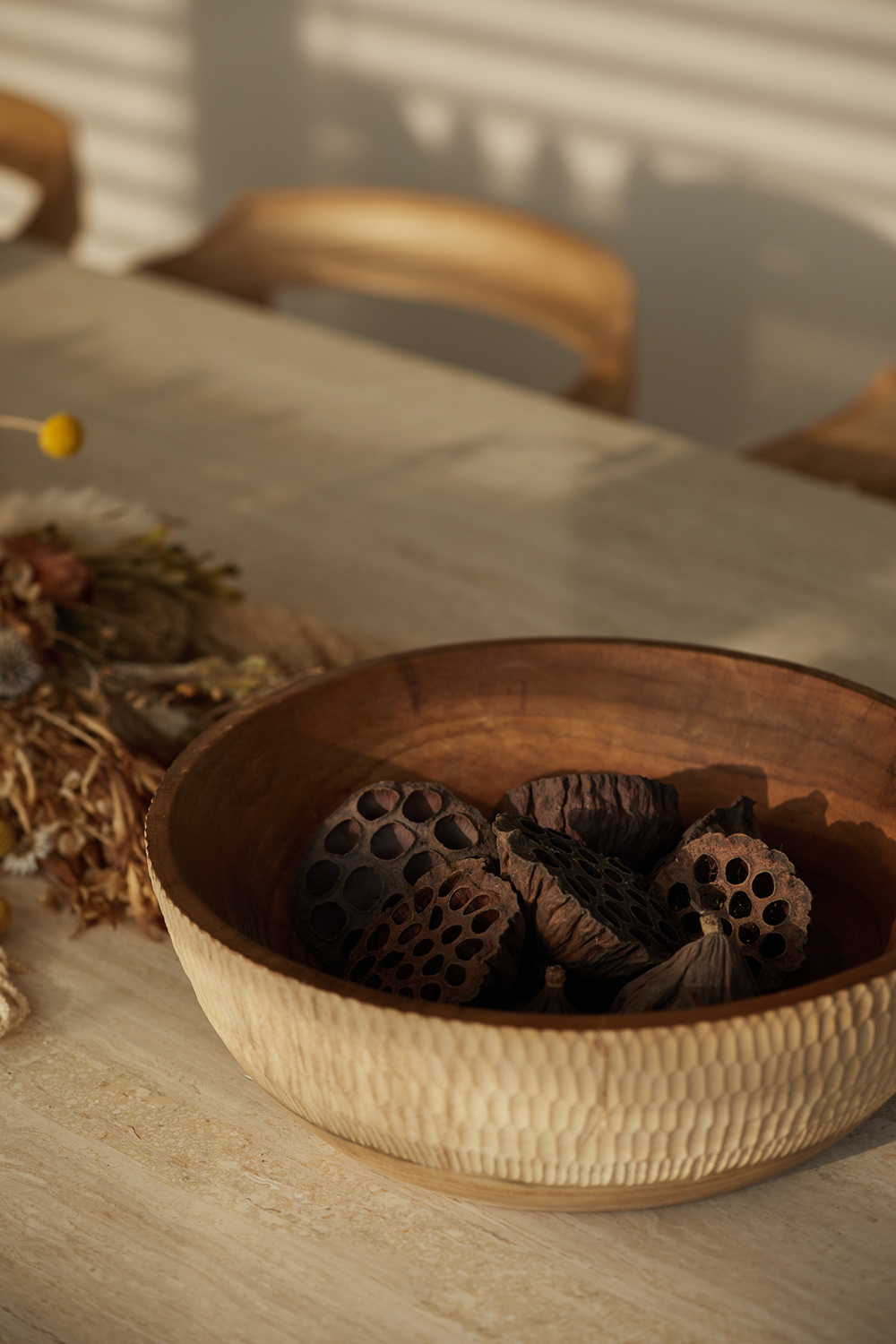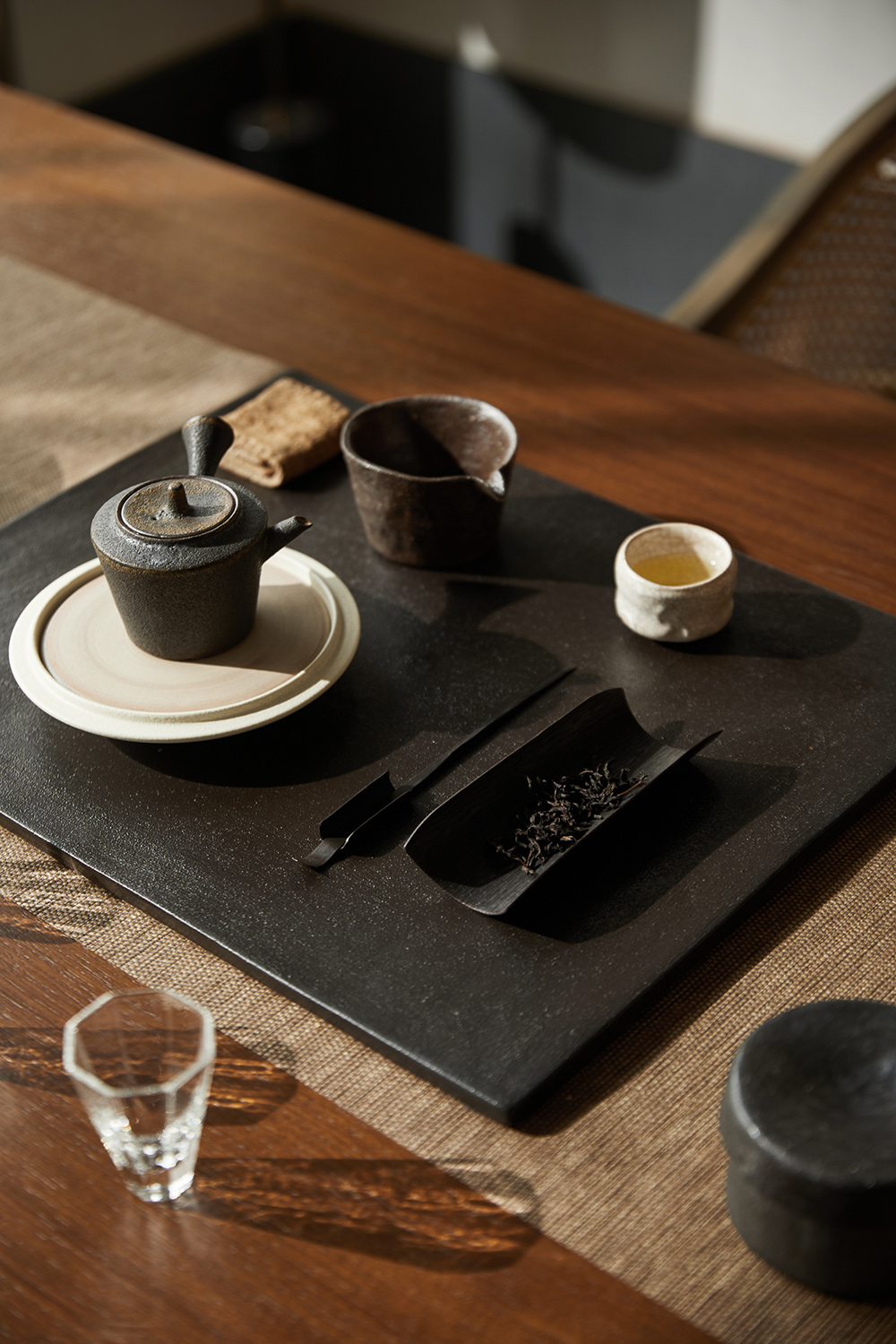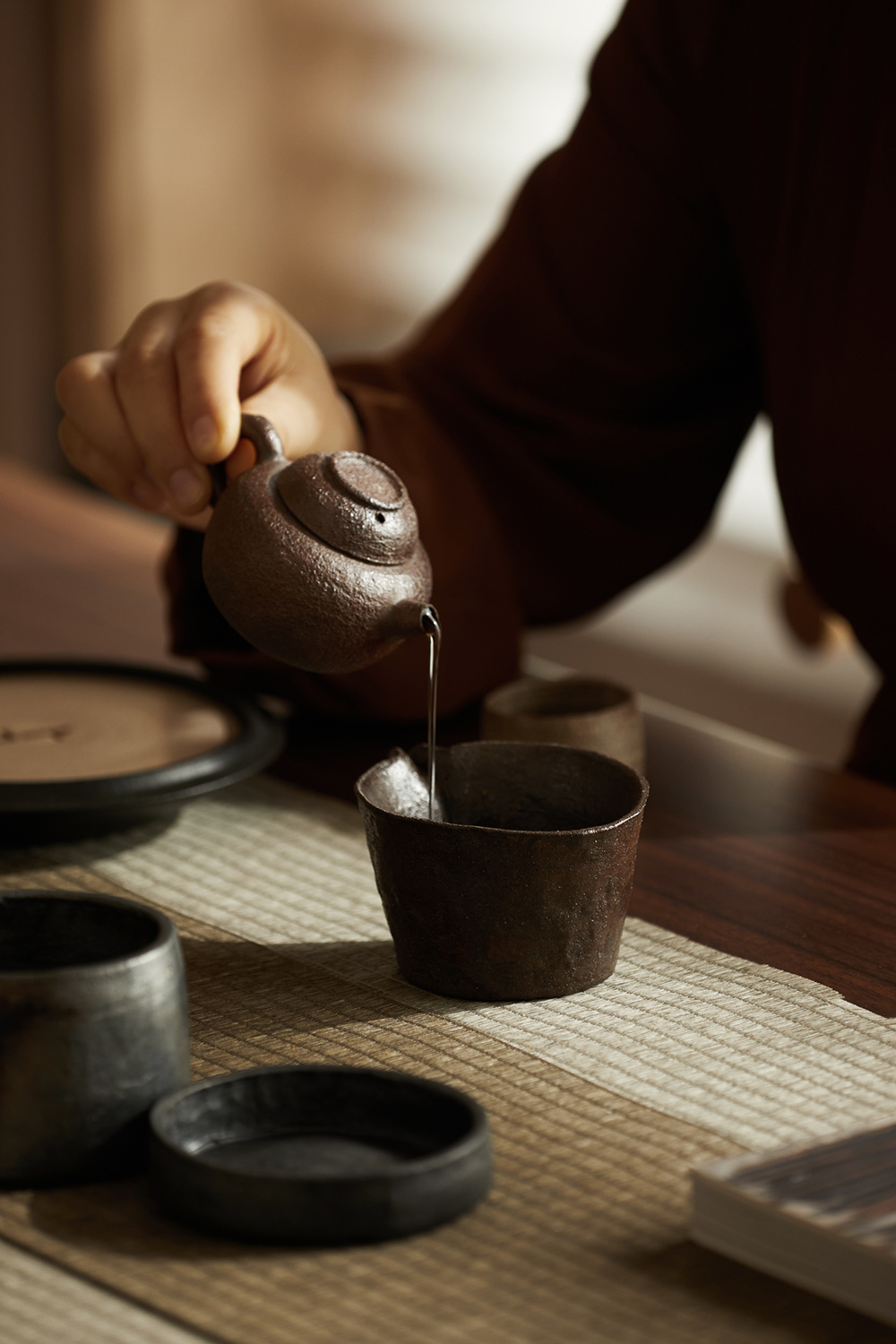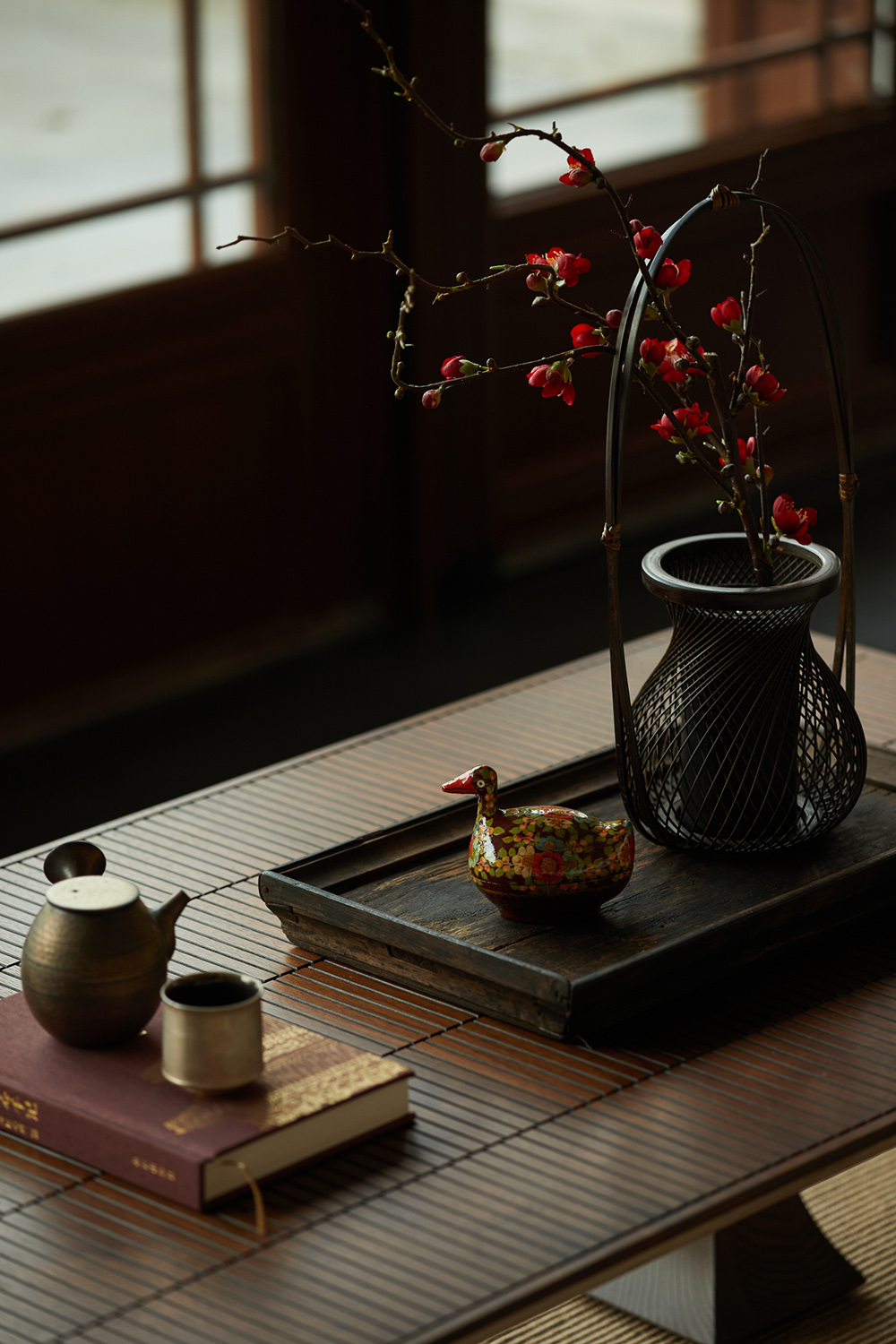In Chinese aesthetics, a beautiful space is a small pavilion on a verdant mountain or a secluded garden at the end of a noisy market. The subtle emotions in the heart of the Chinese people are filled with color and more importantly with the sustenance of the world.
01 The Origin of the Project
Through the screen, people’s spirit and life are gradually filled with fragmented information. This rhythm of urban life seems to have been used to by everyone, and it also starts to make us think about what is the ideal living. It may be in nature, or in the countryside, or in our moments with ourselves or those close to us.
WJ STUDIO recently completed the design for the clubhouse of Shanghai Aroma Town. From the perspective of differentiating existing resort products, the design incorporates thematic social and natural elements into the imagination of holiday life. It introduces the intention of flowers and the concept of idyllic living to create an ideal living and experiencing space for this resort area in the southern suburbs, which also responds to the two needs of holidays and living in the region.
02 A Triple Space: From Extensive to Private
As a relatively dynamic clubhouse and experiential area of the town, the designers have divided the space into aromatic regions with a focus on ‘flowers’ and experiences, a ‘tea’-themed social living room for meetings and socialising, and a ‘food’-themed private dining room. The three different spatial areas are unified in the same system by their interconnected moving lines, and extend to their respective courtyards.
The three levels of space are progressive, and the design elements are always an overlay of the three dimensions of ‘primordial natural attributes’, ‘cyclical and living’ and ‘the experience of a natural state of growth.
The aromatic area corresponds to the broader natural environment and is a public and extensive space; the social living room is smaller in scope but also belongs to the public domain, and the private dining room is the most personal expression of this sequence of spaces. These elements permeate the private environment from the broad through the public domain: the same natural elements play different roles in different upholstery styles and scenarios.
“Tea” – Social Living Room
Chinese people say tea to meet friends, drinking tea is the traditional literati communication and leisure time of the main activity. As a space for rest, socialising, and transition, the social living room area takes Chinese Zen-style brush painting as its initial intention, and the overall design style is elegant and quiet, realising the leisure and contentment of the spiritual dimension of consciousness.
The interior ceiling is simplified with a Chinese sloping roof as a prototype, echoing the theme of Zen. Wood is also used as the primary material. Unlike the dialogue and use of natural elements in the display area, the natural elements in the social living room are mainly through the floor-to-ceiling windows to achieve the intersection of human and natural sight lines.
Still, the material’s colour is slightly darker than the aromatic display area, reproducing the colour trend in traditional Chinese culture, and the space as a whole is more formal and tranquil.
Exquisite utensils contain the sense of ritual that users pursue in their lives,In the furnishings and other details, some natural intent is incorporated, combined with the selection of low stools and bar tables, amplifying the Zen atmosphere of the space and increasing the possibility of people interacting here.
“Flower” – Aromatic Display and Experience
The design creates a comfortable display and experience area with clean lines and a smooth combination of spaces. The materials chosen are mostly light wood colours, using warm wood colours to emphasise the experience, bringing a more intimate and comfortable feeling and allowing the subject to achieve a state of mental relaxation in this series of spaces.
The mix of wood colours with glass and the metal of the incense-making machines adds an extra dimension of human and natural harmony to the room.
The mix of woods, combined with the addition of ceiling flowers to the interior fittings, also emphasises the herbaceous feel of the space. The choice of furniture is also based on artisanal pieces, reinforcing this ambience.
In the aromatic experience area, travertine is added to bring a touch of calmness and relaxation with the clash of wood.
The Spa area and guest rooms use a darker colour palette and light and shadow effects to provide a comfortable place for guests to rest and recuperate. The design of the aromatic showcase attempts to convey a sense of escapism, holiday, garden and relaxation to the outside world.
“Food” – Private Dining
The Private Dining Room continues the elegant feel of the previous space, with a dark wood base and echoing materials to create a natural, intimate, open, and quiet private area.
The tea room in this area is designed to highlight the concept of leisurely tea drinking in the woods, creating a gathering scene of ‘three or two friends drinking together. Both indoors and outdoors, with as much direct contact as possible with the natural landscape, the modern interpretation of the ancient Chinese theme of privacy and nature also illustrates the designers’ consideration of the proposition of ‘integrating natural elements into the most private of spaces.
03 “Relaxing in Nature”
As a kind of holiday and leisure intention, flowers always appear as the main or supporting character in holiday and leisure places. The Aroma Town project is based on the theme of flowers and holidays. It is also hoped that the designer’s perception and expression of leisure space can be conveyed more vividly from vision to smell through flowers and their derivation.
Unlike the instant pleasure that a paradise brings visitors, The Aroma Town wants to create a life-like scene, a natural intention closer to life, representing tranquility and leisure, a place for living. And it is a place of rest and recovery for people living in a fast-paced city for a long time—a place of respite.
The focus of space is gradually shifting from the floral nature of the aromatic displays to the users. It also implicitly shows that the overall design process slowly infiltrates spirit from the vast domain into the private territory through the spaces.




